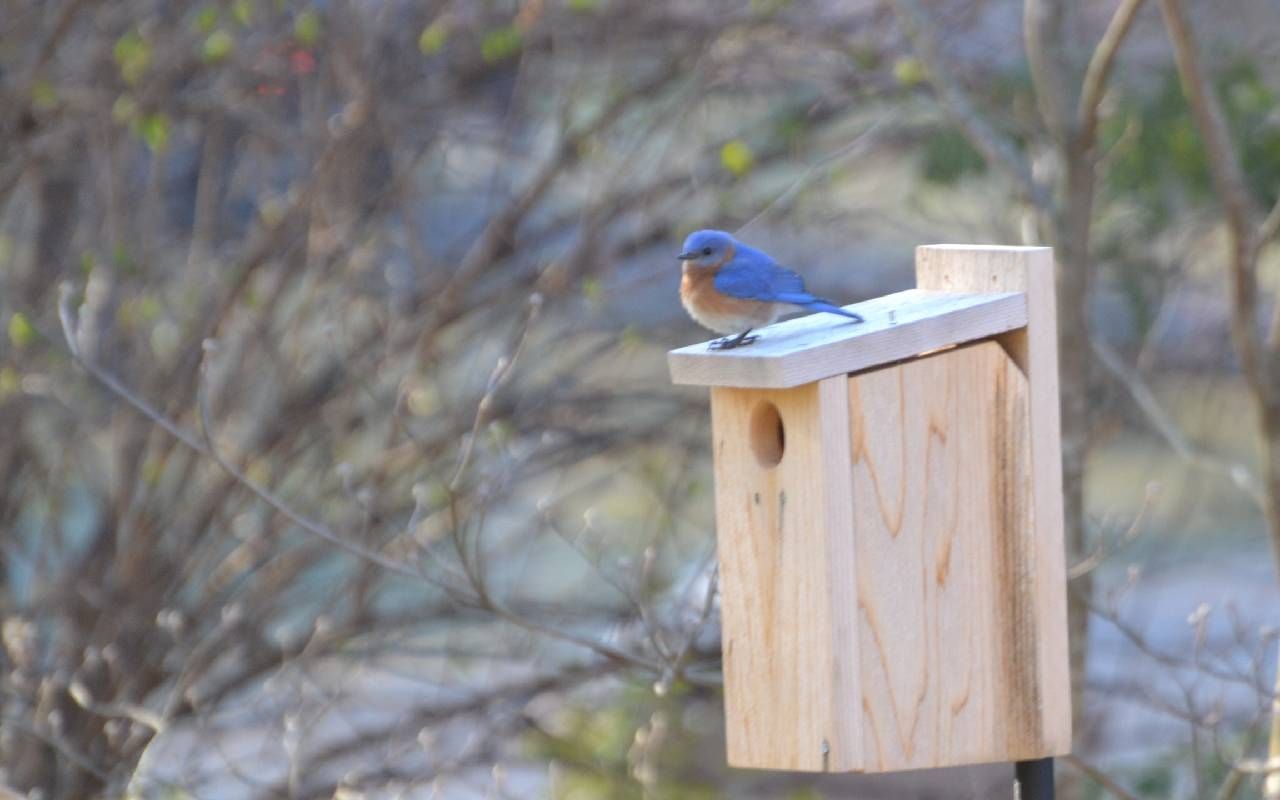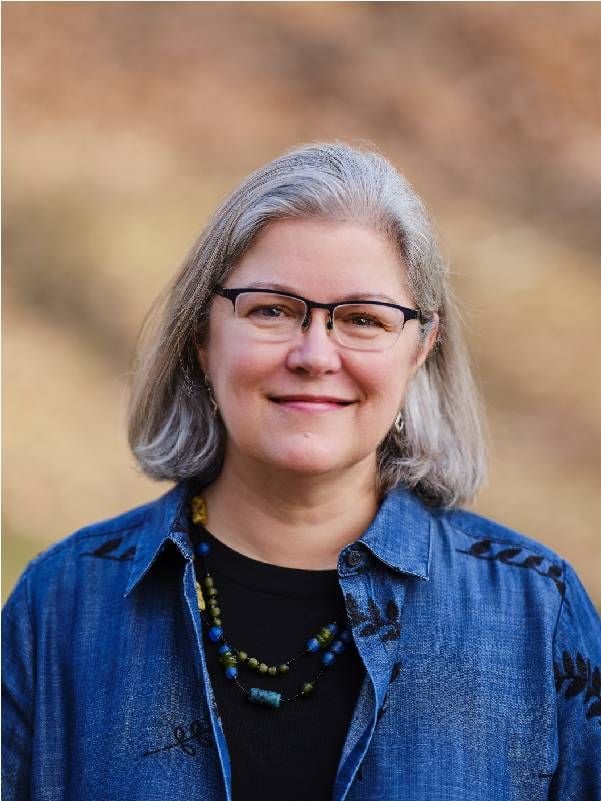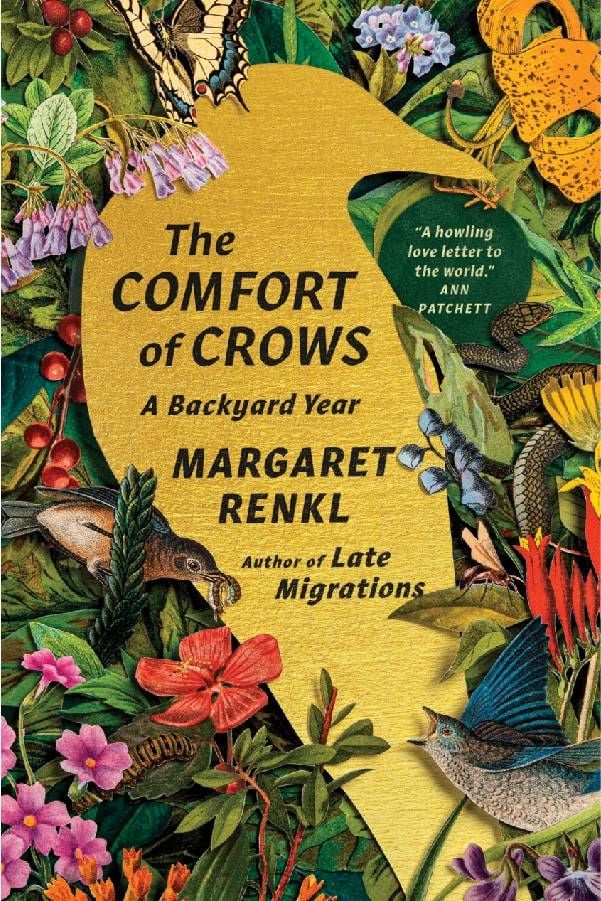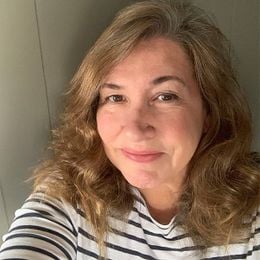Carefully Observing the Natural World
Margaret Renkl, New York Times opinion writer and author of 'The Comfort of Crows,' honors the cycles of nature by paying attention
Margaret Renkl's latest book, "The Comfort of Crows," opens with a short prologue entitled "Wherever You Are, Stop What You Are Doing." In this one-and-a-half page introduction, she encourages the reader to, among other things, "stop and listen to the ragged-edged beech leaves, clattering amid the bare branches of the other hardwoods."
Renkl, contributing opinion writer to the New York Times and winner of a 2022 Pen America Literary Award for "Graceland, At Last," offers a directive that could be considered the entire theme of this lovely book: stop and listen.

Whether you live in a rural environment, as Renkl does, near Nashville, or in the heart of an urban community, the rhythm of nature and the unfolding of the seasons bring fresh delights and sometimes new sadness, with all manner of birds, bees, spiders, rabbits, frogs and flowers in between.
"The Comfort of Crows" begins with Winter, the first week of December, and concludes with the last week of Fall, when the cycle will reset once again.
"I do think that we (as a culture) value the natural world more than we did, but we're still thinking of it as something 'out there.'"
So how has Renkl, 62, perfected the art of stopping and listening? It's a habit she said she cultivated at her mother's instigation as a child growing up in rural Alabama.
"My mother's position was basically just go out and play. And as long as my brother Billy and I stayed together as sort of a buddy system, we could really go anywhere we could get on our feet," she told me in a recent interview. "And that fostered a kind of curiosity that I never really outgrew."
"The Comfort of Crows" is a testament to Renkl's curiosity: there are bluebirds to be carefully watched in their houses, a stock-tank pond to be attended to (and tadpoles, a 34th anniversary gift from her husband Haywood), a gray spider who implemented Renkl's writing table as an anchor for an extravagant web to be marveled at, along with blooming wildflowers, flowering trees and even a wayward fox.
"I used to feel a little guilty about how much time I spent staring out the window or sitting on my back steps because it felt like I should be making every second count," she said. "My to-do list is like everyone's to-do list. There are emails in my inbox that I fully intend to answer that are dated somewhere in 2019."
The Habitat We Share
It could be argued that by being so in sync with the wildlife in her own backyard, near a remote cabin belonging to friends that Renkl and her husband visit on occasion, or with a broader perspective on our connection to nature, she is making every second count.
"I do think that we (as a culture) value the natural world more than we did, but we're still thinking of it as something 'out there,'" Renkl said. "We're still worried about the melting ice floes in the Arctic and what it's doing to the polar bears. We are aware that something is happening to the insects a little bit. But it doesn't feel personal to us."

"I think that is partly because we've come to think of nature as something you get in a car to drive to, to go camping or to have a picnic in the park," she continued. "We don't think of it as the places where we live in a habitat we share."
According to Renkl, paying attention to that connection on a daily basis is her "why."
"In 'The Comfort of Crows,' I put so much of an emphasis on observation because we can't cherish what we're losing unless we know it's there. And once we get to that point of noticing, then we get to 'what can we do about it?'"
In Renkl's view, there are small things we can do. For instance, "we can leave the leaves where they fall because leaves are what birds and mammals use as blankets in the winter. They collect leaves, they carry them to their nests, to their hidey holes," she said.

Speaking of leaves, near the end of the book, there is a chapter called "How to Rake Leaves on a Windy Day" where Renkl writes that, in the fall, we should take a dried leaf and put it on a desk or next to a bed: "Keep it nearby, through whatever troubles the long winter brings…it will help you remember what the wind always teaches us in autumn; that just because you can't see something doesn't mean it isn't there."
Natural Connections
I asked Renkl about how this passage about the wind can speak to those who are suffering a loss, and more broadly, how nature can help us appreciate the layered world in which we live.
"It's invisible. What you hear is its interaction with leaves or pine needles so I think that in and of itself is a comfort," she said. "There's so much connection. When you're grieving, you don't feel connected, you feel alone. But like the wind, those connections are there."
Renkl shared a memory of bringing something across the street to her mother's home several years ago and seeing a Carolina Wren's nest in a potted plant on the back porch.
"When you're grieving, you don't feel connected, you feel alone. But like the wind, those connections are there."
"It was right at eye level, you could peer in," she said. "The Carolina Wrens love to nest in hanging baskets and plants near human beings. I don't know if they feel safer.
"When I went in, the baby birds were there, and when I left, they were gone. Something had eaten them or carried them away. And the mother bird was hopping around the edge of the pot looking and looking and looking for her babies.
"And I just thought we believe, we seem to think, that we're the only ones that grieve, that we're the only ones who can't believe it, you know? But she just could not believe it. She kept hopping around and around looking down on the ground, looking for her babies. It was heartbreaking."
Conversation and Collages
Within the pages of "The Comfort of Crows," there is a conversation taking place about the beauty of the natural world between the text and the illustrations, but also a conversation between brother and sister — it is Billy Renkl, a collage artist, who created the artwork for each section. (The pair also worked on another book together, "Late Migrations: A Natural History of Love and Loss," following the sudden death of their mother at 80.)
"I think of them as artworks in conversation with the words. I don't think of them as illustrations at all. These artworks can stand alone completely and don't need the words to be coherent, to make a kind of visual sense," she said. "All I said to him in the beginning was 'I want (the artworks) to be lush and verdant, and I want them to be wild and extravagant, and I want them to make everybody who reads this book wish they had this kind of yard. And that's exactly what he did."

Renkl continues to be a diligent observer of her own backyard, whether just sitting on the back step or in a chair looking through a window, as winter is once more upon us.
"I don't feel guilty about it anymore. I think I maybe felt more guilty about it when I was in the thick of raising children (she and her husband have three grown sons) or elder care. But those were the days when I most needed it. When I most needed time to settle," she recalled. "To be quiet and still, and to listen and look."


